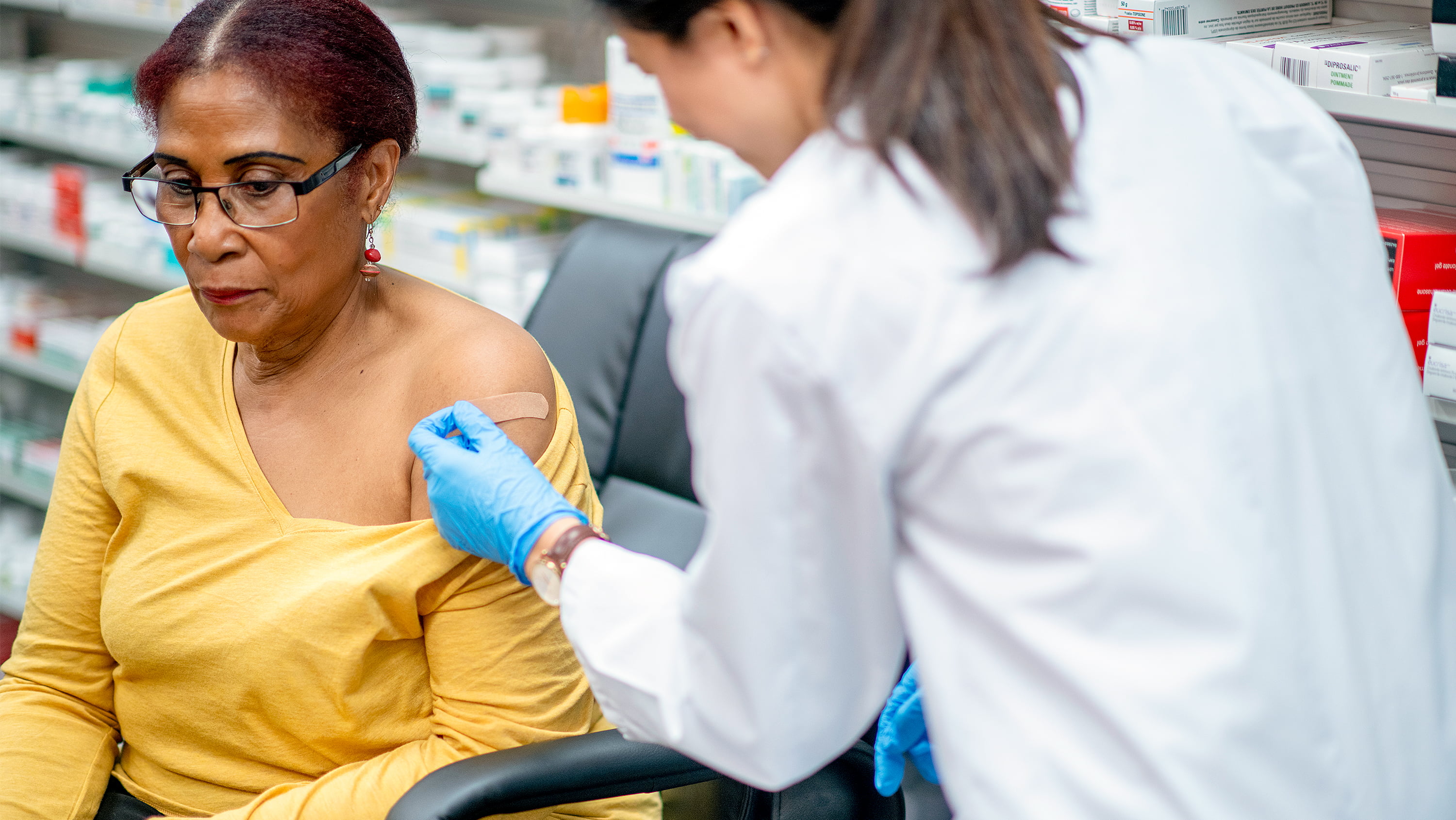Researchers at the University of Alberta looked at conversations between pharmacists and patients before and after an educational intervention to find out why some people refuse recommended pneumococcal vaccines and how pharmacists can help with vaccination uptake.
“Knowing why individuals choose to receive vaccines or not can be really important in terms of being able to meet patients where they’re at and provide them with the best possible information to make an informed decision,” says Danielle Nagy, a PhD student in the Faculty of Pharmacy and Pharmaceutical Sciences and co-author of a study exploring reasons for pneumococcal vaccine refusal.
The pneumococcal vaccine is recommended for all adults over 65 due to the health consequences pneumococcal infections can have on older adults. But only 58 per cent of Canadians in this range have been vaccinated, far short of the Public Health Agency of Canada’s 80 per cent target.
Pharmacists play a key role in providing vaccinations because they are accessible in communities and have a broad scope of practice. And previous studies have shown that pharmacist intervention can improve vaccination uptake among patients. The missing piece, says Nagy, is more knowledge about why certain eligible people opt out of the pneumococcal vaccination.
In the study — part of an ongoing research project to develop and test an intervention program aimed at improving pneumococcal vaccine uptake that can be easily adopted into community pharmacies — researchers tested the influence of an educational intervention designed to enhance pharmacists’ knowledge and ability to promote the vaccine. They found that patients cited different reasons for refusing the vaccine before and after the intervention, indicating that the patient-pharmacist conversations became more effective at addressing various factors behind vaccine hesitancy.
“Vaccination and immunization is a huge role we play in the public health sphere,” says Darius Ramrattan, an undergraduate student who was involved in the study as part of his community pharmacy placement. “As someone on the front lines right now, I can see the impact of work like this in pharmacies.”
Participating pharmacies received a toolkit with an educational video Nagy created, key points addressing some of the common concerns patients expressed, and documentation templates to ease the administrative burden on the pharmacists. Due to the variety of pneumococcal vaccines available, the toolkits also included a decision tree to help pharmacists identify the most suitable vaccine for each patient.
“With the decision tree, the pharmacist can say, ‘Here’s the person sitting in front of me. Based on what I’ve collected from them, these are the specific vaccines we’re going to recommend and here are the strengths and weaknesses of each,’” explains professor Scot Simpson, Endowed Chair in Patient Health Management and principal investigator on the study.
“We really wanted a comprehensive toolkit that could be implemented across the province in a variety of community pharmacy settings,” adds Nagy.
Researchers analyzed 656 conversations between pharmacists and patients at 13 pharmacies across Alberta to test the efficacy of the toolkit and identify any common factors for refusal that pharmacists could address in their conversations.
The three primary reasons for refusal that pharmacists noted from their conversations with patients were due to lack of perceived benefit, cost, and lack of time or the need for more time to think about the decision.
Vaccination refusal due to lack of perceived benefit declined significantly, from 9.4 per cent to 4.7 per cent.
“It really reiterates the importance of pharmacists in health promotion, especially with respect to administering vaccines and providing that education to patients,” says Nagy. “And it highlights that these conversations we have with patients really can influence an individual’s decision.”
Refusal due to cost increased after the educational intervention, but the researchers explain this is because patients became more aware of all the vaccination options available to them, as some variations of the pneumococcal vaccination are out-of-pocket expenses at the pharmacy but free in other health-care settings. These patients may have gone on to receive a vaccination, just not in the pharmacy.
“For the main project this study is part of, we used provincial immunization records so it doesn’t matter where the person got the vaccine, we’ll be able to identify that they received it.”
To address refusal due to lack of time, the toolkit encouraged pharmacists to take a proactive approach, identifying and contacting patients who would benefit from the vaccination. “That way, people coming in would have prepared to spend more time interacting with the pharmacist,” says Simpson.
Next steps involve rolling out the toolkits in 40 to 50 additional pharmacies to prove the educational intervention is effective on a larger scale. The researchers also note there may be opportunities to expand the concept to target other recommended vaccinations with the aim of increasing uptake.
The study was supported by a Merck Investigator Studies Program grant.
